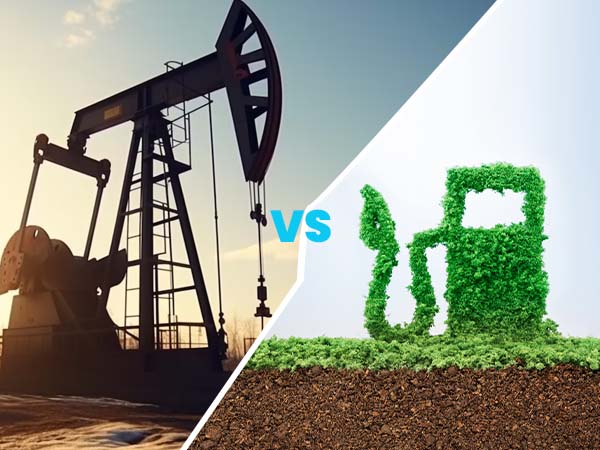Business aviation is a vital sector that contributes to economic growth, innovation, and connectivity. However, it also faces the challenge of reducing its environmental impact, especially its carbon emissions. One of the most promising solutions is the use of sustainable aviation fuel (SAF), which is a low-carbon alternative to conventional jet fuel. But how does SAF compare to fossil fuels in terms of cost, availability, and performance? And what are the benefits and barriers for business aviation operators to adopt SAF?
What Is SAF & How Does It Reduce Emissions?
SAF stands for sustainable aviation fuel. It is produced from sustainable feedstocks, such as waste oils, biomass, or captured CO2, that have a lower carbon footprint than fossil fuels. SAF is very similar in its chemistry to traditional jet fuel, and can be used safely in any turbine-powered aircraft without any modifications. Using SAF results in a reduction in carbon emissions compared to the traditional jet fuel it replaces over the lifecycle of the fuel, depending on the feedstock, production method, and supply chain. According to the International Air Transport Association (IATA), SAF can potentially reduce lifecycle greenhouse gas (GHG) emissions by up to 80%.
How Much Does SAF Cost & How Available Is It?
One of the main challenges for the adoption of SAF is its cost and availability. Currently, SAF is more expensive than conventional jet fuel, mainly due to the limited supply and high production costs. An environmental rating system for business aviation, the average price of SAF in 2021 was about $4.50 per gallon, compared to $2.50 per gallon for conventional jet fuel. However, this price gap is expected to narrow in the future, as the production capacity and demand for SAF increase, and as policy incentives and market mechanisms are implemented to support SAF development.
The availability of SAF is also limited by the current production capacity and distribution infrastructure. According to the U.S. Department of Energy, the global production capacity of SAF in 2020 was about 50 million gallons per year, which is less than 0.1% of the total jet fuel demand. However, there are several projects underway to expand the SAF supply, which aims to produce SAF from household waste at a plant in Nevada. Additionally, there are initiatives to increase the SAF distribution network, which is a group of industry stakeholders that works to promote the use of SAF at airports and FBOs around the world.
How Does SAF Perform & What Are The Benefits for Business Aviation Operators?
SAF has the same performance and safety standards as conventional jet fuel, and can be blended with fossil fuels up to a certain percentage, depending on the certification of the aircraft and engine. SAF can also offer some additional benefits for business aviation operators, such as:
- Reducing the carbon footprint and environmental impact of their flights, which can enhance their reputation and social responsibility.
- Meeting the regulatory requirements and voluntary commitments for GHG emissions reduction, such as the Carbon Offsetting and Reduction Scheme for International Aviation (CORSIA) and the Business Aviation Commitment on Climate Change (BACCC).
- Saving on fuel costs in the long term, as the price of SAF becomes more competitive and the price of fossil fuels increases due to carbon taxes or other measures.
- Improving the engine performance and efficiency, as SAF can have a higher energy density and lower sulfur content than conventional jet fuel.
What Are The Barriers & How To Overcome Them?
Despite the benefits of SAF, there are also some barriers that hinder its adoption by business aviation operators, such as:
- Lack of awareness and information about SAF, its availability, and its benefits.
- Lack of standardization and certification of SAF quality and sustainability across different regions and markets.
- Lack of infrastructure and logistics to deliver SAF to the end users.
To overcome these barriers, business aviation operators can take some actions, such as:
- Educating themselves and their customers about SAF, its advantages, and its challenges.
- Seeking out SAF suppliers and requesting SAF availability at their destinations.
- Participating in industry initiatives and advocacy efforts to promote SAF development and adoption.
- Exploring alternative ways to access SAF, such as book-and-claim, which is a system that allows operators to purchase SAF credits from a producer and claim the emissions reduction, even if they do not physically receive the SAF.
Delve into the economic dynamics of sustainable aviation fuel (SAF) versus fossil fuels with Just Aviation’s in-depth analysis. Understand the cost implications, market trends, and long-term sustainability of SAF adoption in business aviation. Our comprehensive examination equips you with the knowledge to make informed decisions regarding fuel choices, aligning environmental responsibility with operational efficiency. Trust Just Aviation to navigate the complexities of this evolving landscape with clarity and insight.
